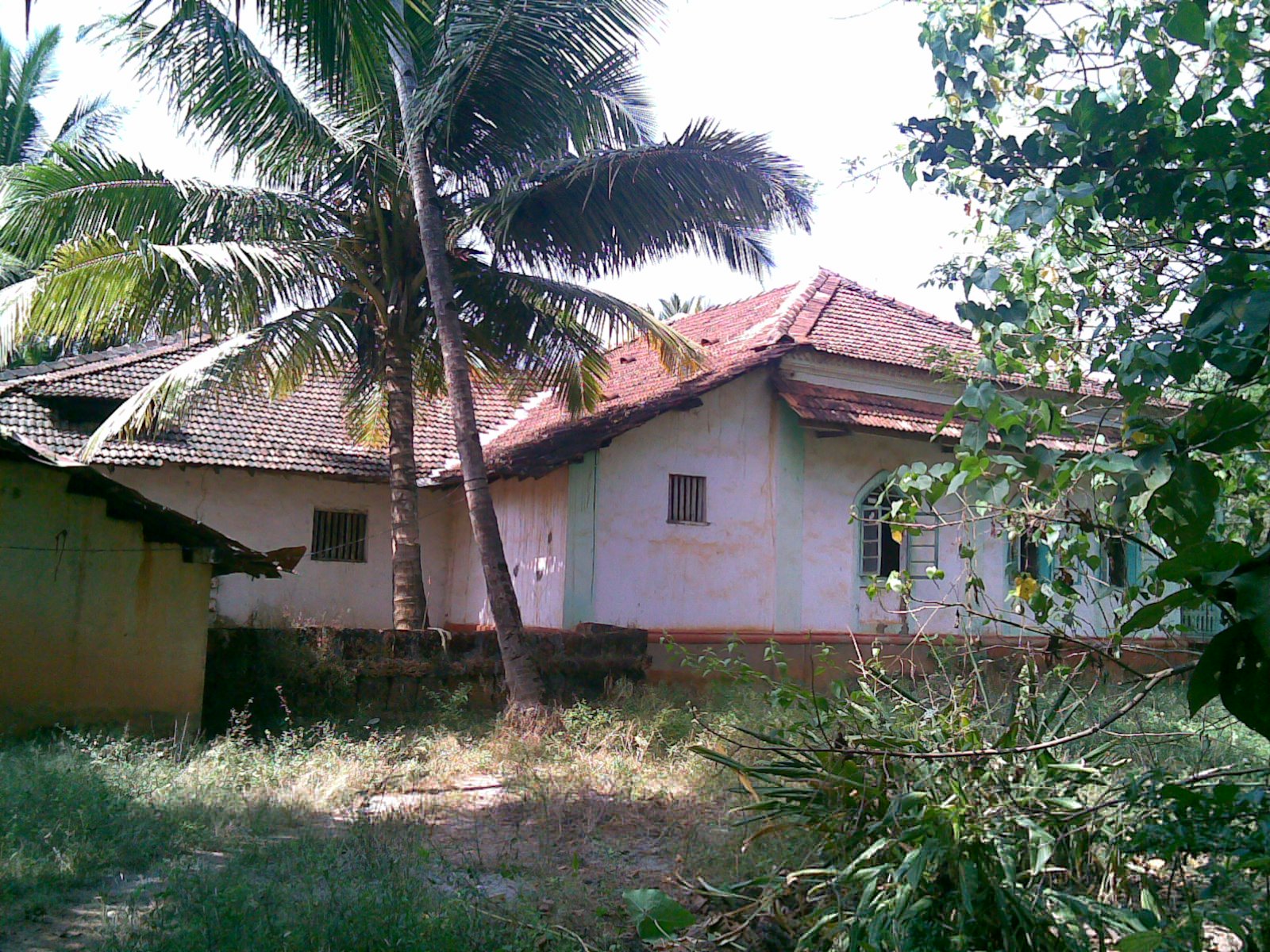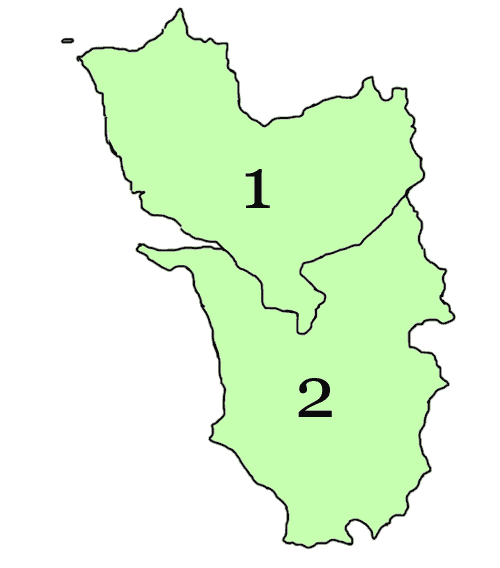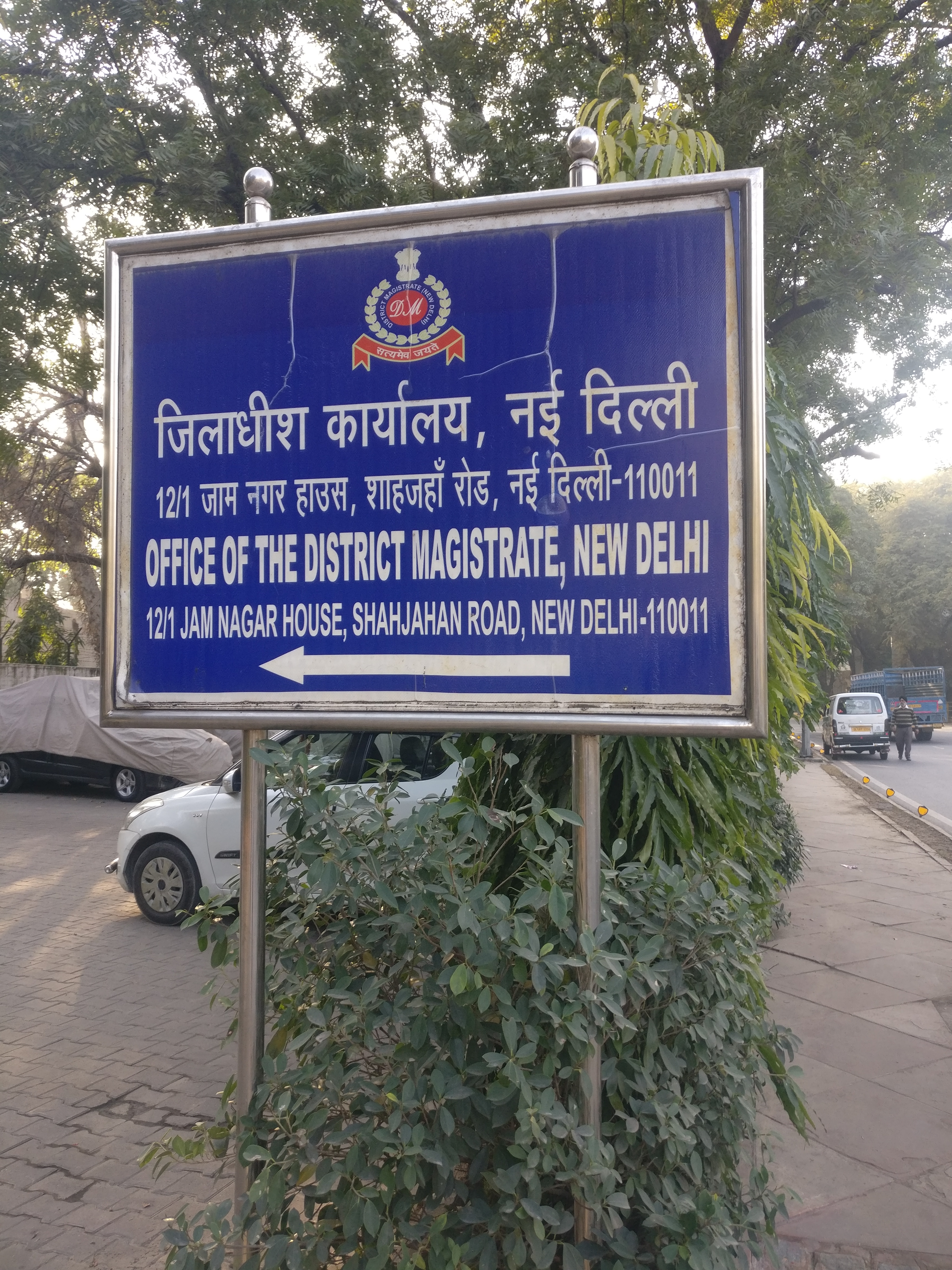|
South Goa District
South Goa district is one of two districts that together constitute the state of Goa, India, within the region known as the Konkan. It is bounded by North Goa district to the north, while the Arabian Sea forms its western coast. It ranks among the top 25 developed districts of India. The district capital city is Margao (Madgaon), which also serves as the commercial capital of Goa. History The Portuguese established a colony in Goa in 1510 and expanded the colony to its present boundaries during the 17th and 18th centuries. Goa was annexed by India on 19 December 1961. Goa and two other former Portuguese enclaves became the union territory of Goa, Daman and Diu, and Goa was organised into a single district in 1965. On 30 May 1987 Goa attained statehood (while Daman and Diu became a separate union territory), and Goa was reorganised into two districts, North Goa and South Goa. Administration Asvin Chandru A, an officer of the Indian Administrative Service, is the Collector and ... [...More Info...] [...Related Items...] OR: [Wikipedia] [Google] [Baidu] |
Salcete
Salcete or Salcette (Konkani: ''Saxtti''/''Xaxtti'') is a subdivision of the district of South Goa, in the state of Goa, situated by the west coast of India. The Sal River and its backwaters dominate the landscape of Salcete. Historically, the sixty-six settlements south of the Zuari River formed the original Salcette territory. Salcete forms a part of the bigger Konkan region that stretches along the western shoreline of peninsular India. In erstwhile Portuguese Goa, the Salcette ''concelho'' (county) located in the '' Velhas Conquistas'' (Old Conquests) was co-terminous with the undivided Salcette territory ( Mormugao and Salcete ''talukas''). In 1917, the ''concelho'' was bifurcated into the present-day ''talukas'' of Mormugao and Salcete. The contemporary Salcete ''taluka'' has been classified as a rurban area. Margao serves as the administrative headquarters of both Salcete ''taluka'' and the South Goa district. Etymology "Salcete" is the modern Portuguese s ... [...More Info...] [...Related Items...] OR: [Wikipedia] [Google] [Baidu] |
Sanguem Taluk
Sanguem ''taluka'' is an administrative region of Goa state, India. Demographics At the time of the 2011 Census of India, Sanguem had a population of 65,147 with sex ratio of 997 females to 1,000 males. Sanguem Taluka has an average literacy rate of 83.43%, compared to the national average of 74.04%: male literacy is 89.60% and female literacy 77.24%. Scheduled Castes and Scheduled Tribes make up 1.12% and 21.94% of the population respectively. 17.72% of the population lives in urban areas. Religion Hinduism is followed by the majority of population of Sanguem Taluka. Christians form a significant minority. At the time of the 2011 Census of India 78.86% of the population of the Taluka followed Hinduism, 13.86% Christianity, 6.62% Islam and 0.24% of the population followed other religions or did not state religion. Languages Konkani and Marathi are among the most commonly spoken languages in Sanguem Taluka. At the time of 2011 Census of India, 73.45% of the population of S ... [...More Info...] [...Related Items...] OR: [Wikipedia] [Google] [Baidu] |
Districts Of Goa
The Indian state of Goa is divided into two districts: North Goa and South Goa. Administrative structure North Goa is further divided into three subdivisions — Panaji, Mapusa, and Bicholim; and five ''talukas'' — Tiswadi (Panaji), Bardez ( Mapusa), Pernem, Bicholim, and Sattari ( Valpoi). South Goa is divided into five subdivisions — Ponda, Mormugao (Vasco da Gama), Margao, Quepem, and Dharbandora; and seven ''talukas'' — Ponda, Mormugao, Salcete (Margao), Quepem, and Canacona ( Chaudi), Sanguem, and Dharbandora. (Ponda taluka shifted from North Goa to South Goa in January 2015). Districts Proposed District * Third District (Sattari and Ponda - North Goa, Sanguem and Dharbandora - South Goa) References External links * http://www.goa.gov.in/ {{Goa topics Districts Goa Goa (; ; ) is a state on the southwestern coast of India within the Konkan region, geographically separated from the Decc ... [...More Info...] [...Related Items...] OR: [Wikipedia] [Google] [Baidu] |
District Collector
The district magistrate, also known as the district collector or deputy commissioner, is a career civil servant who serves as the executive head of a district's administration in India. The specific name depends on the state or union territory. Each of these posts has distinct responsibilities, and an officer can assume all of these roles at once. The district magistrate is primarily responsible for maintaining law and order, while the district collector focuses on land revenue administration, and the deputy commissioner is in charge of overseeing developmental activities and coordinates government departments. Additionally, they also serve as election officers, registrar, marriage officer, licensing authority, and managing disaster responses, among other things. While the specific scope of duties may vary from state to state, they are generally similar. The district magistrate comes under the general supervision of divisional commissioner. History Warren Hastings introd ... [...More Info...] [...Related Items...] OR: [Wikipedia] [Google] [Baidu] |
Roads In India
Roads in India are an important mode of transport in India. India has a network of over 6,617,100 km of roads. As of Dec 2024, India has the largest road network in the world. At () of roads per square kilometre of land, the quantitative density of India's road network is equal to that of Hong Kong, and substantially higher than the United States (), China (), Brazil () and Russia (). Adjusted for its large population, India has approximately of roads per 1,000 people, which is much lower than United States but higher than that of China . India's road network carries over 71% of its freight and about 85% of passenger traffic. Since the 1990s, major efforts have been underway to modernize the country's road infrastructure. As of 31 March 2020, 70.00% of Indian roads were paved. As of 31 December 2023, India had completed and placed into use over of four or more lane highways connecting many of its major manufacturing, commercial and cultural centres. According to the ... [...More Info...] [...Related Items...] OR: [Wikipedia] [Google] [Baidu] |
List Of RTO Districts In India
This is a list of the Indian Regional Transport Offices and the assigned codes for Vehicle registration plates of India, vehicle registration. These are broken down to states and territories of India, states or Union territory, union territories and their districts. These RTO offices, governed by the respective state and union territory Transport Departments, are led by Regional Transport Officers (RTOs) and are tasked with enforcing the Motor Vehicles Act, Motor Vehicles Act, 1988, and its associated rules. AN—Andaman and Nicobar AP—Andhra Pradesh The Andhra Pradesh State Government of Andhra Pradesh, state government has decided to issue uniform registration numbers for vehicles across Andhra Pradesh. Since February 2019, all new vehicles in Andhra Pradesh are registered with AP-39 code by default. Andhra Pradesh is the first state to implement the "one state-one code" policy. In 2023, the state government has launched new series, AP-40. AR—Arunachal Pradesh ... [...More Info...] [...Related Items...] OR: [Wikipedia] [Google] [Baidu] |
Köppen Climate Classification
The Köppen climate classification divides Earth climates into five main climate groups, with each group being divided based on patterns of seasonal precipitation and temperature. The five main groups are ''A'' (tropical), ''B'' (arid), ''C'' (temperate), ''D'' (continental), and ''E'' (polar). Each group and subgroup is represented by a letter. All climates are assigned a main group (the first letter). All climates except for those in the ''E'' group are assigned a seasonal precipitation subgroup (the second letter). For example, ''Af'' indicates a tropical rainforest climate. The system assigns a temperature subgroup for all groups other than those in the ''A'' group, indicated by the third letter for climates in ''B'', ''C'', ''D'', and the second letter for climates in ''E''. Other examples include: ''Cfb'' indicating an oceanic climate with warm summers as indicated by the ending ''b.'', while ''Dwb'' indicates a semi-Monsoon continental climate, monsoonal continental climate ... [...More Info...] [...Related Items...] OR: [Wikipedia] [Google] [Baidu] |
Tropical Monsoon Climate
An area of tropical monsoon climate (occasionally known as a sub-equatorial, tropical wet climate or a tropical monsoon and trade-wind littoral climate) is a tropical climate subtype that corresponds to the Köppen climate classification category ''Am''. Tropical monsoon climates have monthly mean temperatures above in every month of the year and a dry season. The tropical monsoon climate is the intermediate climate between the wet Af (or tropical rainforest climate) and the drier Aw (or tropical savanna climate). A tropical monsoon climate's driest month has on average less than 60 mm, but more than 100-\left(\frac\right). This is in direct contrast to a tropical savanna climate, whose driest month has less than 60 mm of precipitation and also less than 100-\left(\frac\right) of average monthly precipitation. In essence, a tropical monsoon climate tends to either have more rainfall than a tropical savanna climate or have less pronounced dry seasons. A tropical monsoon cl ... [...More Info...] [...Related Items...] OR: [Wikipedia] [Google] [Baidu] |
Climate Of India
The climate of India consists of a wide range of weather conditions across a vast geographic scale and varied topography. Based on the Köppen climate classification, Köppen system, India encompasses a diverse array of climatic subtypes. These range from arid and semi-arid regions in the west to highland, sub-arctic, tundra, and ice cap climates in the northern Himalayas, Himalayan regions, varying with elevation. The northern lowlands experience subtropical conditions which become more Temperate climate, temperate at higher altitudes, like the Sivalik Hills, or continental climates, continental in some areas like Gulmarg. In contrast, much of the south and the east exhibit tropical climate conditions, which support lush rainforests in parts of these territories. Many regions have starkly different microclimate, microclimates, making it one of the most climatically diverse countries in the world. The country's meteorological department follows four seasons with some local ad ... [...More Info...] [...Related Items...] OR: [Wikipedia] [Google] [Baidu] |
Cuncolim
Cuncolim is a town in South Goa district in the state of Goa, India. Geography Cuncolim is located at . It has an average elevation of . History It is a former village, now with a municipal council of its own, in the south Goa sub-district (''taluka'') of Salcette, India. It is part of the AVC (Assolna-Velim-Cuncolim) network of villages. There are twelve chardo(kshtriya)''Vangodds'' (clans) of ''Ganvkars'' (landlords) in the village. Their names, in order of precedence, are as follows: Mhal, Shetcar, Naik, Mangro, Shet, Tombddo, Porob, Sidakalo, Lokakalo, Bandekar, Rounom and Becklo. Cuncolim was the site of the Cuncolim revolt in 1583. Those killed on the Christian side included five Jesuits who were later beatified as the "Martyrs of Cuncolim". The village of Cuncolim was the original site of the famous temple of Shree Shantadurga before almost all the villagers converted to Christianity and the temple was demolished.''Sarasvati's Children: A History of the Mangalo ... [...More Info...] [...Related Items...] OR: [Wikipedia] [Google] [Baidu] |
Postal Index Number
A Postal Index Number (PIN; sometimes redundantly a PIN code) refers to a six-digit code in the Indian postal code system used by India Post. On 15 August 2022, the PIN system celebrated its 50th anniversary. History The PIN system was introduced on 15 August 1972 by Shriram Bhikaji Velankar, an additional secretary in the Government of India, Government of India's Ministry of Communications (India), Ministry of Communications. The system was introduced to simplify the manual sorting and delivery of mail by eliminating confusion over incorrect addresses, similar place names, and different languages used by the public. PIN structure The first digit of a PIN indicates the zone, the second indicates the sub-zone, and the third, combined with the first two, indicates the sorting district within that zone. The final three digits are assigned to individual post offices within the sorting district. Postal zones There are nine postal zones in India, including eight regional zon ... [...More Info...] [...Related Items...] OR: [Wikipedia] [Google] [Baidu] |
Indian Standard Time
Indian Standard Time (IST), sometimes also called India Standard Time, is the time zone observed throughout the Republic of India, with a time offset of UTC+05:30. India does not observe daylight saving time or other seasonal adjustments. In military and aviation time, IST is designated E* ("Echo-Star"). It is indicated as ''Asia/Kolkata'' in the IANA time zone database. History The Indian Standard Time was adopted on 1 January 1906 during the British era with the phasing out of its precursor Madras Time (Railway Time), and after Independence in 1947, the Union government established IST as the official time for the whole country, although Kolkata and Mumbai retained their own local time (known as Calcutta Time and Bombay Time) until 1948 and 1955, respectively. The Central observatory was moved from Chennai to a location at Shankargarh Fort in Allahabad district, so that it would be as close to UTC+05:30 as possible. Daylight Saving Time (DST) was used brief ... [...More Info...] [...Related Items...] OR: [Wikipedia] [Google] [Baidu] |






